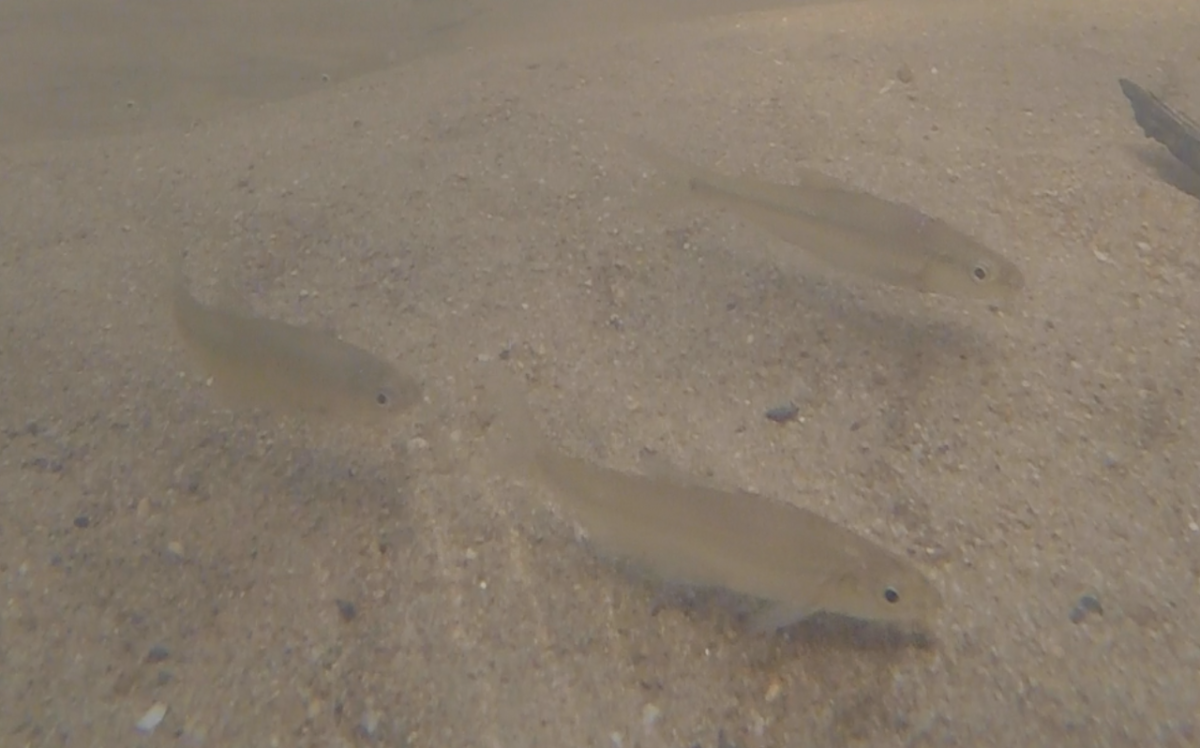Written by: Jessie Melton
River herring, Alosa pseudoharengus and Alosa aestivalis, are an anadromous fish species that migrate from marine waters through estuaries to freshwater nurseries in order to spawn and lay eggs. River herring have historically been a valuable commercial species in fisheries, but the stocks collapsed throughout their native region along the Atlantic Coast since the 1990s. The Potomac Environmental Research and Educational Center (PEREC) has conducted an ongoing study of Gunston Cove for the past three and a half decades, and has incorporated the monitoring of river herring population to aid in determining whether or not the moratorium is beneficial to the decline in river herring abundance.

The intent of this study is to determine whether there are alternative methods for studying population sizes of adult river herring in place of using fyke nets. Fyke nets stretch across the body of water, with a conical portion in the middle to catch the fish trying to swim upstream. Not only do fyke nets produce high mortality rates in the species being studied, but using fyke nets also requires high costs of labor, a large amount of time, and can be difficult or impossible to set up due to high flow rate or inclement weather.
One alternative method that could be introduced is the use of environmental DNA (eDNA). eDNA refers to the DNA that has been left behind (in this case in the water column) in the form of feces, shed skin, scales, or gametes (Carim et al. 2016). This method simply requires that at least one liter of water is collected from a sample site. The water sample is filtered with a hand pump filtration apparatus and the filter is then stored in a -80 freezer until samples can be processed (Laramie et al. 2015). Once ready to process, the filters are then analyzed to determine what DNA sequences are present (Carim et al. 2016).
The second introduced method that will be implemented is the use of video  surveillance. For this portion of the study, two cameras will be set up solely at Accotink Creek, one camera stationed 10 feet above the water, capturing an aerial view across the creek bed, and one camera under water, to capture a view through the water column. For this portion of the study, two cameras will be set up solely at Accotink Creek. The videos will then be analyzed to see if what is caught in fyke nets reflect what is seen in video footage.
surveillance. For this portion of the study, two cameras will be set up solely at Accotink Creek, one camera stationed 10 feet above the water, capturing an aerial view across the creek bed, and one camera under water, to capture a view through the water column. For this portion of the study, two cameras will be set up solely at Accotink Creek. The videos will then be analyzed to see if what is caught in fyke nets reflect what is seen in video footage.
Though a main goal of this study is to test alternative sampling methods, one of the main ideas is to ensure that the alternative sampling methods are less invasive. While less invasive methods are ideal, it is also important to ensure that alternative methods are less labor intensive. The incorporation of methods such as eDNA collection and video surveillance will allow for methods to be conducted by civilian scientists, education groups, and volunteers. Getting people involved in science is one of the best ways to get them to care and understand, which is key to environmental education. I am hopeful that through this study we can find more practical and less invasive methods for studying the health of our fish populations in this ecosystem that can also be applied in broader studies.
Jessie Melton is a second year graduate student in the M.S. Environmental Science and Policy Program, with a focus on Aquatic Ecology, hoping to graduate in December 2018. Her aim is to then further her studies by pursuing her PhD., with the intent of achieving a career in academia.
Literature Cited
Carim, Kellie J.; McKelvey, Kevin S.; Young, Michael K.; Wilcox, Taylor M.; Schwartz, Michael K. 2016. A protocol for collecting environmental DNA samples from streams. Gen. Tech. Rep. RMRS-GTR-355. Fort Collins, CO: U.S. Department of Agriculture, Forest Service, Rocky Mountain Research Station. 18 p.
Laramie, M.B., Pilliod, D.S., Goldberg, C.S., and Strickler, K.M., 2015, Environmental DNA sampling protocol— Filtering water to capture DNA from aquatic organisms: U.S. Geological Survey Techniques and Methods, book 2, chap. A13, 15 p., http://dx.doi.org/10.3133/tm2A13.

